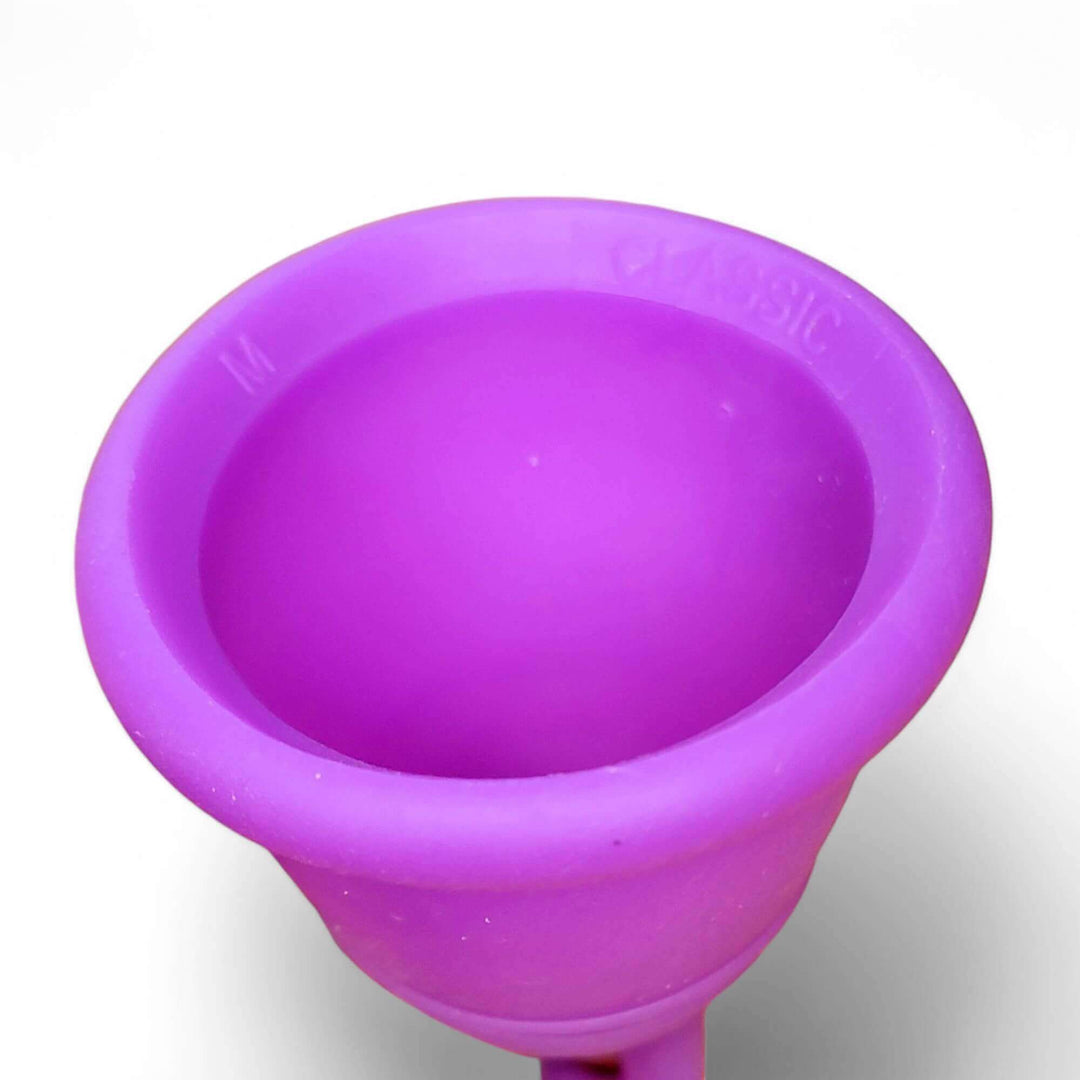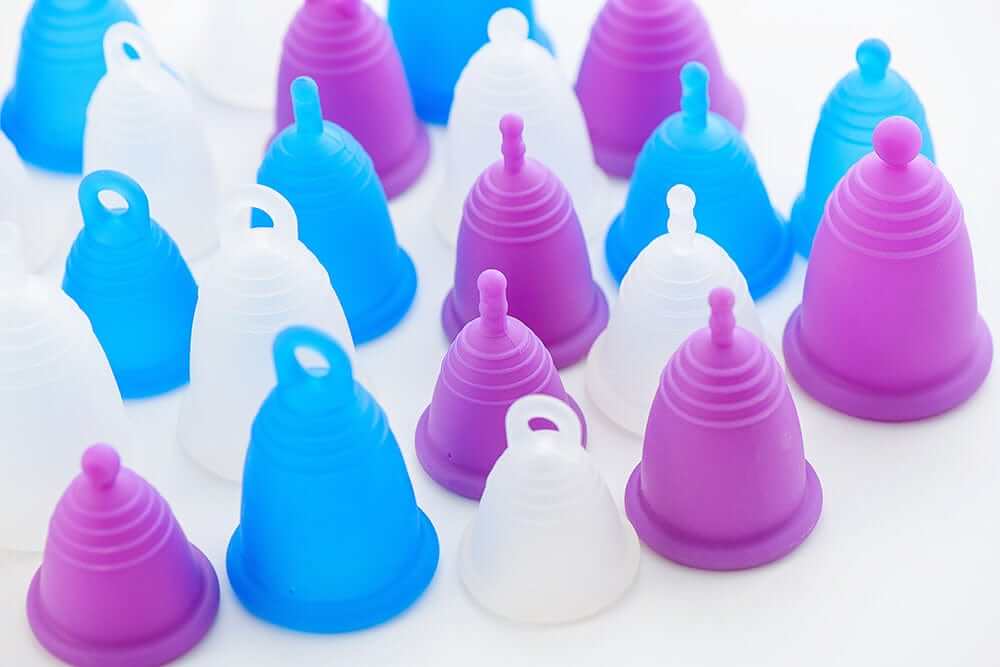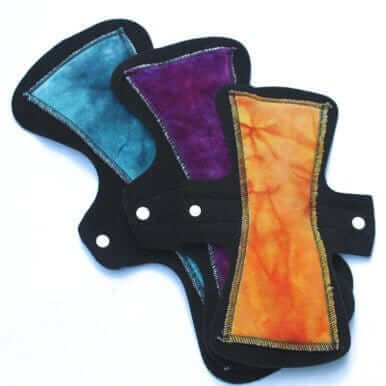Your Guide to Reusable Cloth Menstrual Pads
Curious About Reusable Cloth Pads? Here’s What You Should Know
If you’re exploring more sustainable ways to manage your period, cloth pads might be just what you’re looking for. They’re soft, reusable, and better for the planet—and they’ve come a long way from the bulky options of the past. Whether you’re new to reusable products or just curious about your options, this guide covers everything you need to know.
What are Cloth Menstrual Pads?
Cloth pads are washable, reusable pads made from soft, absorbent fabric. They’re designed to be worn just like disposable pads, but instead of tossing them out, you wash and reuse them.
Each pad typically has three parts:
-
A soft top layer that sits against your skin (often cotton or bamboo)
-
A middle layer that absorbs fluid
-
A leak-resistant backing to keep everything in place
Most cloth pads include wings that snap around your underwear to hold them in place, though there are other styles too if your underwear isn’t snap-friendly. They come in different lengths, absorbency levels, and even fun patterns.
Why choose Reusable Cloth Pads?
People choose reusable pads for all kinds of reasons. Here are a few:
-
Fewer chemicals: Some disposables contain bleach, synthetic gels, and other irritants.
-
Lower waste: Disposable period products can take hundreds of years to break down.
-
Cost savings: Buying cloth pads might cost more up front, but over time they save money.
-
Gentler on skin: Reusable pads made with natural fibers can be more breathable and less irritating than plastics.
Disposable pads and tampons contribute to a lot of waste—billions of them end up in landfills each year. Making the switch to reusables can help reduce that burden.
Sources:
Sanitary pads and diapers contain higher phthalate contents than those in standard commercial plastic products
https://www.ncbi.nlm.nih.gov/pmc/articles/PMC6504186/
A Question for Women's Health: Chemicals in Feminine Hygiene Products and Personal Lubricants
https://www.ncbi.nlm.nih.gov/pmc/articles/PMC3948026/
Menstruation: Environmental impact and need for global health equity
https://obgyn.onlinelibrary.wiley.com/doi/full/10.1002/ijgo.14311
Are cloth pads in any way regulated?
Yes. In the U.S., cloth pads are considered Class I medical devices, meaning they’re seen as very low-risk by the FDA. So while they’re not heavily regulated, they still meet basic safety standards. And let’s face it—injuries from cloth pads are almost unheard of.
Can you use washable period pads for bladder leaks?
They can. Many people use cloth pads not just for periods, but also for light bladder leakage or stress incontinence. If that’s something you’re dealing with, look for pads like Domino Pads Keepdry that have a moisture-wicking top layer to help keep you dry and comfortable.
How do you take care of cloth pads?
Understanding how to wash and care for your cloth pads ensures longevity and effectiveness. Proper maintenance is simple but crucial.

Taking care of your cloth pads is simple once you get the hang of it. Here’s a general routine:
-
Rinse in cold water as soon as possible to prevent staining (you can also do a pre-rinse cycle in your washing machine).
-
Wash in warm water with a mild detergent. No need to overdo it—a regular amount works fine.
-
Avoid bleach and fabric softeners, which can break down the fibers and reduce absorbency.
-
Air dry or tumble dry on low. Avoid high heat to protect the materials.
-
Store them in a clean, dry place between uses.
If you’re out and about, bring a small wet bag with two compartments—one for clean pads, one for used ones. It’s discreet and easy to carry.
Whether you prefer to wash your cloth pads with your regular clothing or separate is completely up to you.
It may also depend on how many pads you have. Due to cost many people build "their stash' slowly over time.
How do you manage cloth pads while out and about?
Most people carry cloth pads using something called a wetbag. The most convenient ones have two separate zippered compartments. One is to hold your clean, unused cloth pad, the other is lined with a water proof fabric to hold your used cloth pad.
If that is not a convenient size you can also choose a purse sized mini wetbag. It holds exactly one pad so you leave the house wearing one and having a spare in the mini wetbag. Then when it's time to change pad you simply put on the fresh pad
You can see some wetbag options here

What options are available in reusable menstrual pads?
Menstrual pads are available in many material and design choices. Let's cover the most common ones.
Top stitched & turned cross-shaped pads vs. serged hourglass shaped pads
Top stitched and turned pads make up the majority of cloth pads. All layers are cut in the same shape and stacked, then stitched around the perimeter and turned inside out. The the outline is stitched again.
This is a relatively simple process where everything is assembled in one step.
Because all areas including the wings have several layers of fabric this style tends to add a little more bulk compared to serged and 2-component assembled pads.
Most brands use this approach including Aisle, Hannah and Imse Vimse.
Domino Pads uses a 2-component approach where the absorbent portion is layered and serged separately and sewn onto a moisture barrier liner. This results in a wing that only has one layer of fabric.
The shape of the pads itself also has an effect on how they conform once snapped.
For comparison each image has an hourglass shaped Domino Pad on the left and a cross-shaped Imse Vimse pad on the right. We took photos of the cloth menstrual pads both snapped and unsnapped.


Please disregard the size differences as both brands come in smaller and larger cloth pad versions.
How Often Do Cloth Pads Need to Be Replaced?
With good care, cloth pads can last anywhere from 2 to 5 years—and sometimes longer. High-quality pads may last up to 10 years. You’ll know it’s time to replace a pad when you notice thinning fabric or frayed edges.
To help your pads last longer, rotate through several during your cycle and follow the care instructions closely.
Keep an eye out for signs that your cloth pad might need replacement:
- Visible wear and tear.
- Thinning fabric indicates it's time for a new one.
To maximize the life of your cloth pads, consider:
- Rotating among multiple pads to distribute wear evenly.
- Adhering strictly to care instructions provided by the manufacturer.
Can Cloth Pads Be Used for All Levels of Menstrual Flow?
Absolutely. Cloth pads are available in a range of absorbency levels, from pantyliners to super-heavy options. On heavier days, you might need to change your pad more often, just like with any other product.
Look for pads labeled by flow level, or choose a few styles to see what works best for you. Many people find that cloth pads are surprisingly absorbent once they find their ideal fit.
During heavier days, it might be necessary to change your cloth pad more frequently to:
- Maintain optimal hygiene.
- Prevent leakage and promote comfort.
Are Cloth Pads a More Environmentally Friendly Option Compared to Disposable Pads?
In short, yes. Reusable pads cut down significantly on the number of disposable products going to landfill. While they do require water and energy for washing, their overall environmental impact is lower than that of single-use products.
They also avoid plastic-based materials and synthetic additives, making them a smart choice for eco-conscious shoppers.
- Longevity: They can be reused for years, significantly cutting down the waste you would otherwise contribute to landfills with disposables.
- Lower manufacturing impact: Using natural and sustainable materials, cloth pads avoid the plastics and synthetic fibers prevalent in many disposables.
- While washing them does consume water and energy, the ecological footprint of cloth pads is comparatively smaller than that of disposables.
By choosing cloth pads, you're actively participating in a circular economy – a system that emphasizes resource efficiency and waste reduction.
Browse by Material/ Design Option:
Choosing the Right Cloth Pad for You
Reusable pads come in different materials, shapes, and designs. Some pads are top-stitched and turned (a common style that’s slightly bulkier), while others use a layered design that separates the absorbent core from the waterproof backing for a slimmer fit.
Each brand offers different options, so you might want to try a few to see what feels best for your body.
The Best Cloth Pad Brands
We are excited to bring you this huge variety of choices.
Listing of Available Cloth Pad Brands listed in alphabetical order
Aisle (formerly Lunapads)
Highlights
- The Lunapads brand has been rebranded to Aisle Period Products
- Made in Canada
- Cotton Outer
- PUL Lining
Consideration
- Cotton pads are often more economical but may show age sooner than other materials
Domino Pads
Highlights
- Cloth pad brand with most sizes, styles and top layer options
- Offers a regular and a petite size range including the popular mini pads for petite users.
- Made in USA
- Third-Party Lab Tested Free of PFAS
- No PUL. Uses breathable, high quality Windpro as leak-proof barrier
- Trimmer than most cloth pads due to design separating waterproof liner and absorbent pad
- High-end materials
Consideration
- US made will result in a higher cost for the pad
Hannah Brand Cloth Pads
Highlights
- Affordable Multipacks
- Made in Vietnam
- Organic Cotton Outer Material
- Smaller size than other brands
Consideration
- Cotton flannel may pill over time, Consider other materials like bamboo velour, if this bothers you.
- smaller size than other brands (could be good or bad depending on what you like!)
Imse Vimse
Highlights
- Affordable Multipacks
- Made in Sweden
- No PUL
- Organic Cotton Outer Material
Consideration
- Cotton flannel may pill over time, Consider other materials like bamboo velour, if this bothers you.
Rael Menstrual Pads
Highlights
- Made in South Korea
- Organic Cotton
- PUL Lining
Consideration
- Cotton pads are often more economical but may show age sooner than other materials
For a quick overview check out our cloth pad comparison chart:

Final Tips
-
Don’t assume sizing is the same across brands. Always check the size chart.
-
You don’t need a full collection right away. Start with a few and build over time.
-
Some brands even offer starter kits to make it easier to try them out.
Cloth pads are a comfortable, reliable, and environmentally friendly option for your period. Whether you're trying them for sustainability, savings, or skin comfort, they’re worth exploring. A small change in your period routine can have a big impact over time—for you and for the planet.
Still unsure? Take the Cloth Pad Quiz!
Related Posts:




















Leave a comment